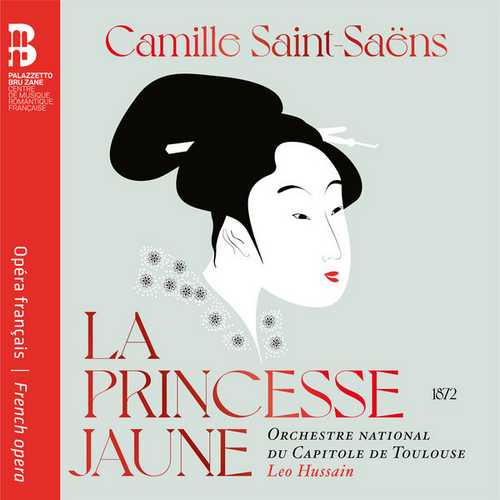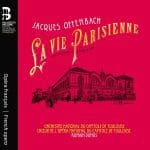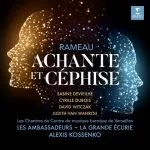

Composer: Charles Camille Saint-Saëns
Performer: Judith van Wanroij, Mathias Vidal, Anaïs Constans, Axelle Fanyo, Philippe Estèphe, Jérôme Boutillier, Éléonore Pancrazi, Artavazd Sargsyan
Orchestra: Orchestre du Capitole de Toulouse
Conductor: Leo Hussain
Format: FLAC (tracks)
Label: Bru Zane
Catalogue: BZ1045
Release: 2021
Size: 1.36 GB
Recovery: +3%
Scan: yes
La Princesse jaune (The Yellow Princess)
01. I. Ouverture
02. II. Dialogue. Kornélis ! Kornélis ! Entrerai-je ?
03. III. Air. Outsou Sémisi Kamini
04. IV. Dialogue. Bonjour cousin !…
05. V. Air. J’aime, dans son lointain mystère
06. VI. Dialogue. Ah ! C’est trop !
07. VII. Air. Je faisais un rêve insensé
08. VIII. Dialogue. C’est peut-être la mort !
09. IX. Vision. Vision dont mon âme éprise
10. X. Dialogue. Eh bien ! Mais il est là !
11. XI. Duo. Ah ! Quel nuage d’or s’ouvre devant mes yeux !
12. XII. Chanson. Sur l’eau claire et sans ride
13. XIII. Duo (suite). Je ne comprends rien à ta poésie !…
14. XIV. Mélodrame. Il repose et sa fièvre est calmée !
15. XV. Duo. Ce doux mot qu’ignorant de moi-même
Melodies Persanes Op. 26
16. I. Prélude
17. II. La Brise
18. III. La Splendeur vide
19. IV. La Solitaire
20. V. Sabre en main
21. VI. Interlude
22. VII. Au cimetière
23. VIII. Tournoiement
That globetrotting composer Camille Saint-Saëns wrote La Princesse jaune in 1872, exemplifying the current craze for all things Japanese. Kornélis, played by the tenor Mathias Vidal, dreams only of the Land of the Rising Sun. Under the influence of a hallucinogenic potion, he becomes infatuated with Ming, a fantasy princess. His cousin Léna – the soprano Judith van Wanroij – despairs of this passion and does not dare to confess her own feelings to Kornélis, who eventually comes to his senses.
The running time of this opera enables us to offer a coupling in the shape of a previously unrecorded version of Saint-Saëns’s six Mélodies persanes, thus extending the guiding thread of a yearning for exotic horizons in another direction. Leo Hussain conducts the Orchestre National du Capitole de Toulouse in both works.



